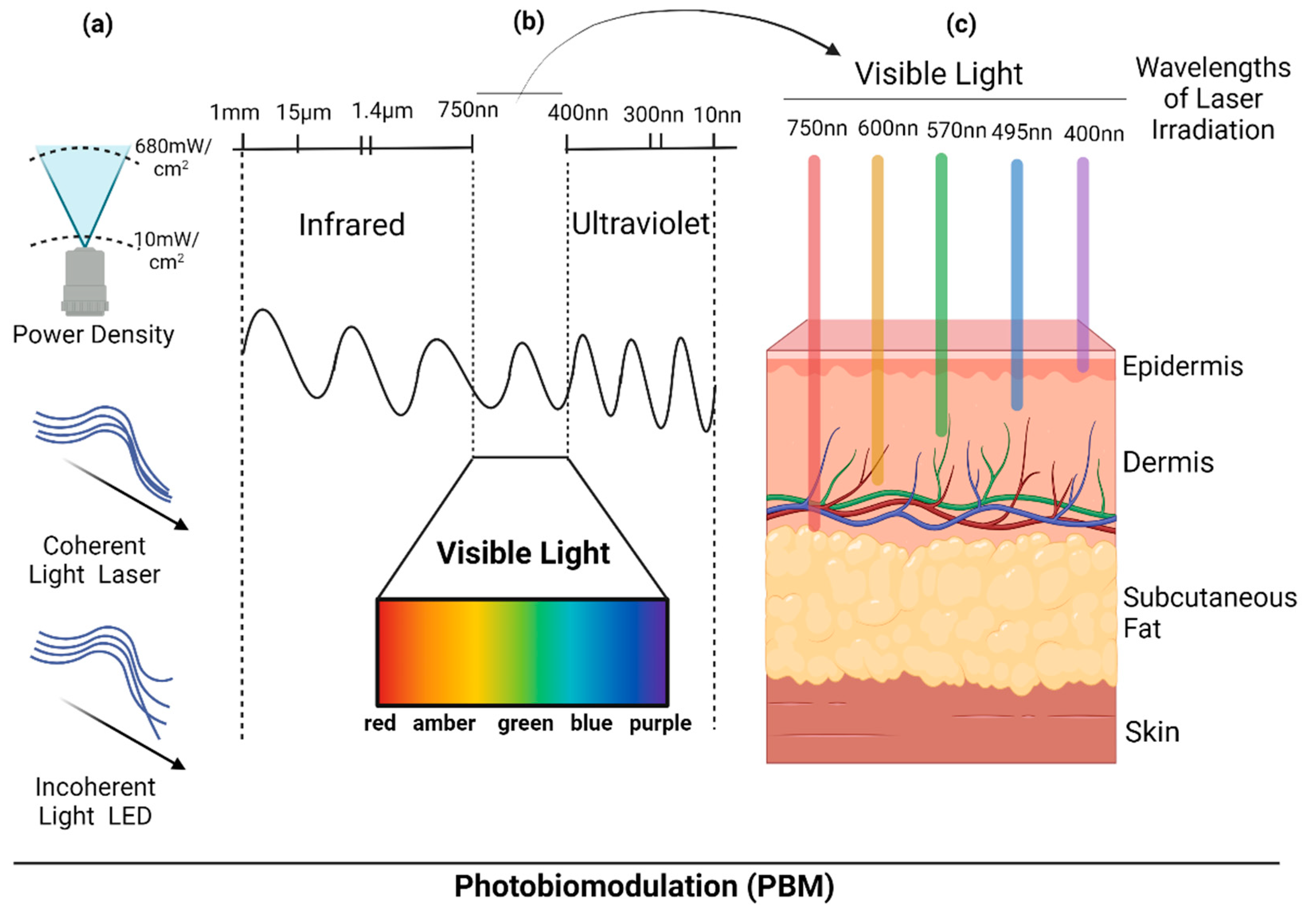The Main Principles Of Photobiomodulation
Wiki Article
Photobiomodulation Fundamentals Explained
Table of Contents3 Simple Techniques For PhotobiomodulationWhat Does Photobiomodulation Do?Some Known Questions About Photobiomodulation.The 2-Minute Rule for Photobiomodulation
Laser therapy is a clinical treatment that utilizes focused light to promote a process called. During PBM, photons enter the cells and connect with the cytochrome c complicated within mitochondria. This interaction sets off an organic cascade of occasions that brings about a boost in cellular metabolic process, which can as well as accelerate the recovery process.There is agreement that the application of a healing dosage of light to damaged or inefficient tissue results in a cellular response mediated by mitochondrial systems. Photobiomodulation. Research studies have actually shown that these modifications can affect discomfort and inflammation, as well as, tissue repair
Modifications in ATP, reactive oxygen types and nitric oxide adhere to light absorption by Cc, O. These impacts are redox state and dosage dependent. In hypoxic or otherwise worried cells it has been shown several times that complying with, nitric oxide is launched, ATP is enhanced and oxidative anxiety is reduced [27-31]

A Biased View of Photobiomodulation
PBM devices have been removed for advertising and marketing by FDA via the Premarket Notification/510( k) procedure as adjunctive tools for the short-term relief of pain. These clearances were based upon the discussion of clinical information to sustain such cases (Photobiomodulation). In this treatment, a source of light is positioned near or touching the skin, enabling the light energy (photons) to permeate cells where it connects with chromophores located in cells causing photophysical and photochemical changes that cause alterations at the molecular, cellular and tissue degrees of the bodyRemarkably, recent study suggests that light can enhance efficiency in normal cells and cells. The potential applications of PBMT are countless and are being checked out experimentally at the basic scientific research, pre-clinical and medical degree. The present clinical uses are for the alleviation of pain and swelling and the treatment of sports injuries.

The therapy specifications and number of sessions required for PBMT are reliant upon location and reason. PBMT usually needs even more than one therapy for optimum discomfort relief.
Unknown Facts About Photobiomodulation
Therapy parameters for PBMT were initially established making use of cells artificial insemination and in small pet models. These therapy parameters normally had a low irradiance and fluence and functioned well for cutaneous applications. However when medical professionals began to utilize PBMT to treat frameworks that lay much deeper in the body, they used these specifications with negative results.
We now comprehend that these adverse studies was because of incorrect device and therapy criteria for transcutaneous therapy of deeper frameworks. Current advances in laser treatment gadgets and even more study right into the appropriate dosages have dramatically improved the results of PBMT. For treating deep tissues, the wavelength of light made use of identifies the depth of infiltration into a tissue.
It is vital that a medical professional utilizes the proper wavelength of light and specifications my blog to treat a condition. One wavelength and one collection of treatment review criteria will not be efficient for all conditions. Negative side results have not been reported from the usage of PBMT.
Some Known Details About Photobiomodulation
In the first experiment, Dr. Endre Mester, used cut rats and observing how the laser influenced their capacity to grow hair compared to the team that was not receiving LLLT. He found that the team of computer mice getting LLLT had the ability to expand their hair back quicker than the group of computer mice that didn't obtain LLLT (Hoon C, et al; 2012).This treatment is called this way to differentiate the difference between the lasers some occupations utilize to reduce (eg. Low-level light therapy is pain-free, non-invasive treatment.
LLLT has a biphasic response, meaning that lower dosages are usually seen to be much more beneficial than greater doses. That being stated, dosages higher or less than the optimum dosage does not impact (Hoon C, et al; 2012). Because of this, it can be tough to have studies on LLLT with so numerous parameters.
Some companies incorporated both (LED and laser) to offer an extra all-round therapy because lasers can penetrate deeper than LED and infrared light (Norman Doidge, The Brain's Means of Recovery, 2015). During therapy, the area that is being dealt with is exposed to LED light from a Biography, Flex Laser, which is at 660 nm wavelength, complied with by infrared light at 830-840 nm wavelength.
Report this wiki page